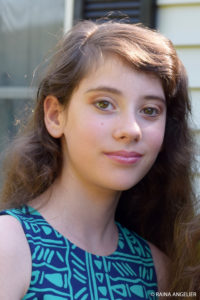11 year old, Iris Rosenhagen, saw a problem in her community and set out to do something about it. In February, Iris founded the Community for Animal Respect and Education (C.A.R.E.), an organization created to educate people about the challenges animals face in today’s world, and inspire them to help. Under Iris’s leadership C.A.R.E. recently completed a campaign with a Roots & Shoots mini-grant to help the monarch butterfly populations in New York by planting milkweed plants. Now, Iris shares how she collaborated with her community to ensure her campaign’s success.
Coming Up With an Idea
The first and most important step in any project is having an idea. Iris said that the idea for her campaign came from a hiking trip she went on a few years ago.
“A few years ago, we went on a Monarch Butterfly hike that took place during their migration, but we only saw a single one. Monarchs used to be a lot more plentiful where we live, so I wanted to do something to help,” Iris said.
The idea generated a lot of interest from her friends, who were also eager to help the monarch. They eventually decided on the best course of action.
“We decided the best way to help them would be to get people to create Monarch Butterfly Waystations in their yard by planting milkweed and other native flowers, and to spread awareness about pesticides,” Iris said.
Collecting Resources
Next, Iris and her friends had to decide what they would need to complete this mission.
“We came up with an outline for the project and a list of materials that we needed. We knew we needed experts to help us, reliable research, a lot of people to participate in the actual planting of milkweed seeds and making of seed bombs, and affordable materials,” Iris said.
In order to acquire the resources and support she needed for this project, Iris researched the topic thoroughly and contacted trusted experts to see if they could help. Funding for materials was made possible by a Roots & Shoots mini-grant.
“Using [rootsandshoots.org], we were able to come up with a plan. We did a lot of research online about Monarchs, about milkweed varieties, and about native flowering plants and got in touch with experts who could provide seeds and teach us about the proper way to grow them,” Iris said. “I applied for a mini-grant from Jane Goodall’s Roots & Shoots to help with funding our project and I was very grateful to receive it.”
Engaging with the Community
Every project needs support from the community in order to be successful. Iris utilized social media to spread the word about her campaign and encourage people to get involved
“Using my Facebook page, C.A.R.E. and local groups, I was able to share the information and organize classes at our library where we put our plan into action,” Iris said. “Social media (Facebook in this case) has made it really easy to reach more people.”
The project was a big success, and Iris and her group were able to host two classes of 50 people each. Participants made over 800 seed bombs and started 210 pots of milkweed and flowering plant seeds. All in all, the project planted over 4,000 seeds of milkweed and other flowering plants to attract the monarch and other pollinators.
According to Iris, those who participated in her campaign learned a lot about the monarch butterfly as well as the power of small actions.
“Literally, we learned about the plight of the Monarchs, man-made environmental threats to them, and how to help them by planting seeds and making seed bombs,” Iris said. “Figuratively, we learned that “Mighty oaks, from little acorns grow.” Even if you do something very small, something much bigger than you ever expected can come from it. Our group learned that by working as a team, we can get even more accomplished.
And working as a team is crucial to protecting our environment. Iris hopes that, by engaging her community in  the plight of the butterfly, she can have bigger positive impact on the world.
the plight of the butterfly, she can have bigger positive impact on the world.
“I’d like to quote John Muir here, ‘When one tugs at a single thing in nature, he finds it attached to the rest of the world.’ This can be positive or negative. We’re all connected and we can all help or hurt the environment,” Iris said. “With just one group of about 50 people, we have been able plant thousands of milkweed seeds covering a really big area. We’re hoping to make a huge difference.”






